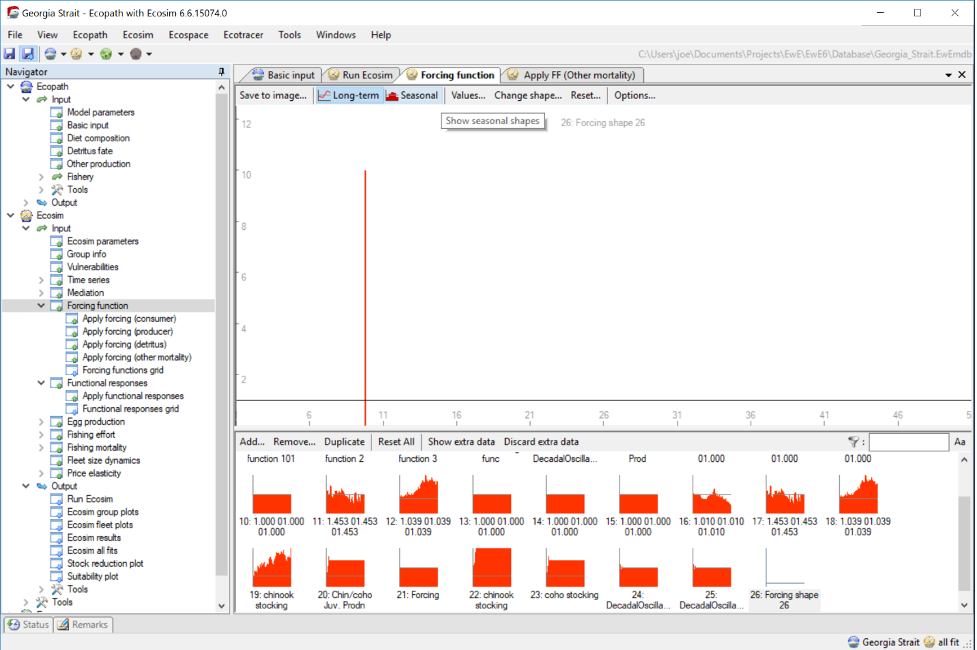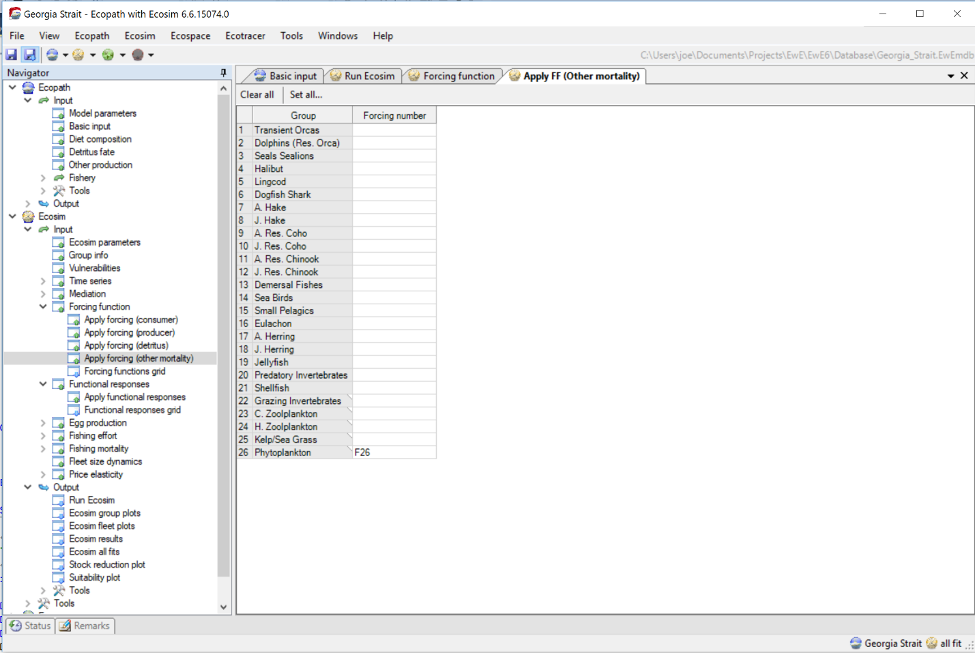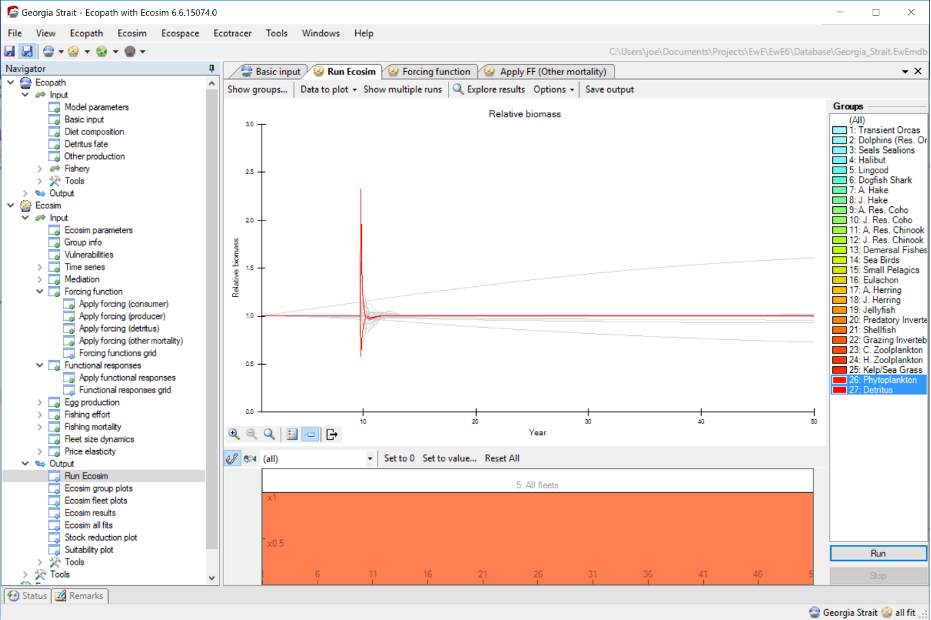Other mortality forcing
A forcing multiplier has been added to the other mortality term of the Ecosim biomass loss equation. This allows the Ecopath baseline other mortality rate to vary over time. This new functionality allows you to simulate a die-off event by changing the baseline other mortality rate.
The biomass loss is now calculated for group i at time stop t as,
[latex]loss_i = Eatenof_i + (M0_i \cdot M0Mult_{it} \cdot (1 - M0Pred_i +M0Pred_i \cdot Ftime_{it}) + Emig_i + FishTime_{it}) \cdot Biomass_{it} \tag{1}[/latex]
Further, M0multi = The new other mortality forcing multiplier for this group at this time step;
Eatenofi = total biomass lost to predation on this group. This is the result of foraging arena biomass flows, all summed up into one number. This is the actual biomass not a rate;
M0i = (1-EE) * PBi (Other mortality rate in the Ecopath Mortalities rates grid);
M0Predi = Fraction of other mortality sensitive to changes in feeding time Ecosim > Group info;
Ftimeit = Feeding time predation risk modifier. Usually around 1.0 but gets set at each timestep based on the Ecosim parameters Minimum foraging time, Group info Feeding time adjustment rate and Group info Predator effect on feeding time. If these are all left at their default values then this will be basically 1.0;
Emigi = Emigration rate from Ecopath > Other Production > Emig. Rate (year-1);
FishTimei = F, fishing mortality rate (year-1), again all summed into one rate for this group;
Biomassit = biomass of this group at this time step.
Discussion

Other Mortality forcing has been implemented as a straight multiplier on M0 by group in Ecosim, rather than an Environmental Response Function that is applied to MOi instead of the feeding rates. This means they fall under the Forcing function user interface in Ecosim rather than the Functional response form. The creation of an other mortality forcing function, from a time series of environmental data, will have to be done outside of EwE. To do this step, one will need to figure out how large of an other mortality multiplier it will take to achieve the desired mortality in response to the environmental driver. This will vary a lot depending on the base other mortality rate, which is displayed in the user interface under Ecopath > Output > Mortality rates > Mortalities > + Other mortality rate (year-1) and the growth rate of the group. If either the growth rate is high, or the other mortality is low, the multiplier will need to be large to simulate a large die-off event.
Currently there’s no functionality in Ecosim to help you choose a suitable other mortality multiplier for a specific event. To do this you will need to calculate the appropriate size multiplier from the Ecopath baseline growth and mortality rates.
For an Other Mortality forcing value to be considered as valid it will need to be non-zero. Zero values will be skipped, and no multiplier will be applied. Values are applied as a straight multiplier, this means values less than one will decrease the Other Mortality rate. This allows you to include a short term spike in Other Mortality without affecting the majority of the run.
The application of Other mortality forcing functions has its own Apply FF (other mortality) user interface grid.


The Figure 3 legend points out that one can see the drop in one group and the increase in another – one can, but it is really difficult to see who’s who. You can get around that by using random colours for groups instead of the default colour scale. This is done where you define the groups at Ecopath > Input > Basic Input > Define groups.

